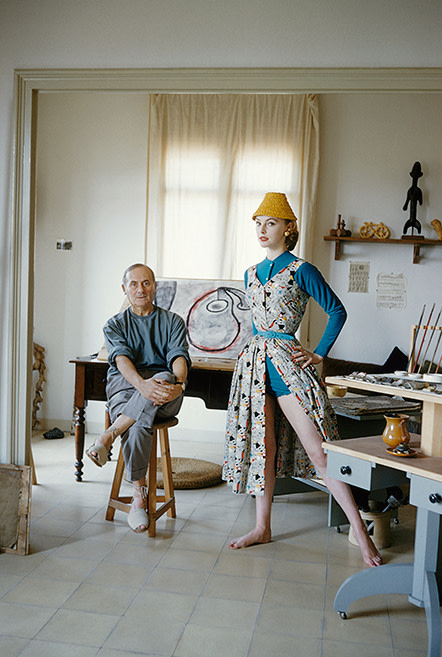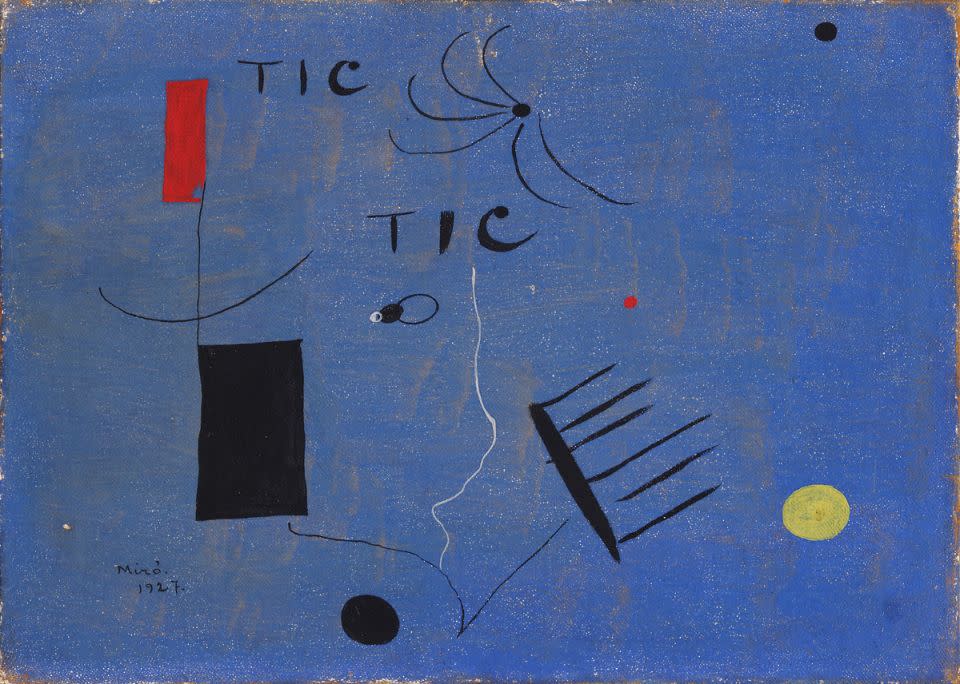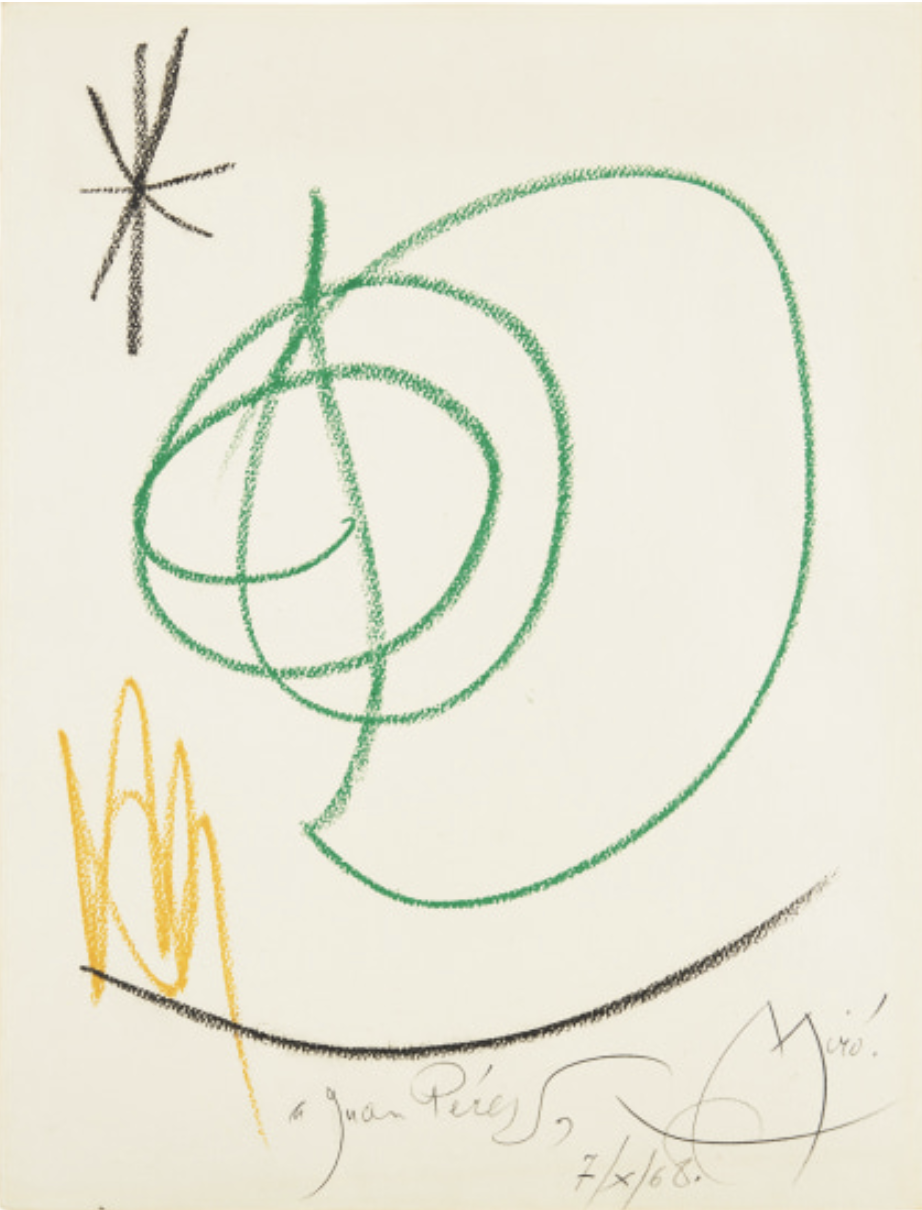A contemporary and compatriot of Picasso, Joan Miró won fame as a Surrealist in the 1920s and later built an international career around a fluent, highly personal style.
Joan Miró
Untitled, 1959

|

|

Miró's reputation was not limited to Europe. Some critics and artists have credited him as an inspiration for New York's post-war school of abstract painting, and his effulgent palette and jagged non-naturalistic forms belong to an unbroken chain connecting 1930s Paris to 1950s New York. Writing in 1959, the American curator James Thrall Soby described him as 'the most instinctively talented artist of his generation'. It was a period of heightened recognition for the artist in the United States and Thrall Soby's comments coincided with a significant exhibition of Miró's work held at the Museum of Modern Art, New York. His other transatlantic achievements of the time included a large-scale mural commissioned for Harvard's graduate dining hall.

Buoyed up by his warm reception in America, Miró's autograph works of this period are alert and elemental. A series of crayon drawings of the 1950s and '60s displays a distinctive motific language, including certain recurrent features such as the star-like asterisk and centrifugal spirals. Each line of these drawings was executed with singular precision, without addition, subtraction or alteration. A single crayon was rarely pressed to the same sheet of paper twice. Together, these terse lines form technicolour inventions of fluent simplicity. The emblazoned signatures and extravagant dating (always a specific day, echoing Picasso's habit) indicates the serious intent behind these playful works on paper.

|
1. Joan Miró, Untitled, 1959, crayon paper, 41 x 31 cm | For Sale
2. Miró in his Barcelona studio with the model Margaret Philipps, 1955, photographed by Mark Shaw © Mark Shaw
3. Joan Miró, Tic Tic, 1927, Kettle's Yard, University of Cambridge © Successió Miró
4. Harvard University's graduate dining hall in the 1950s, with Miró's mural in the background
5. Joan Miró, Sans Titre, 1968, Private Collection © Successió Miró

